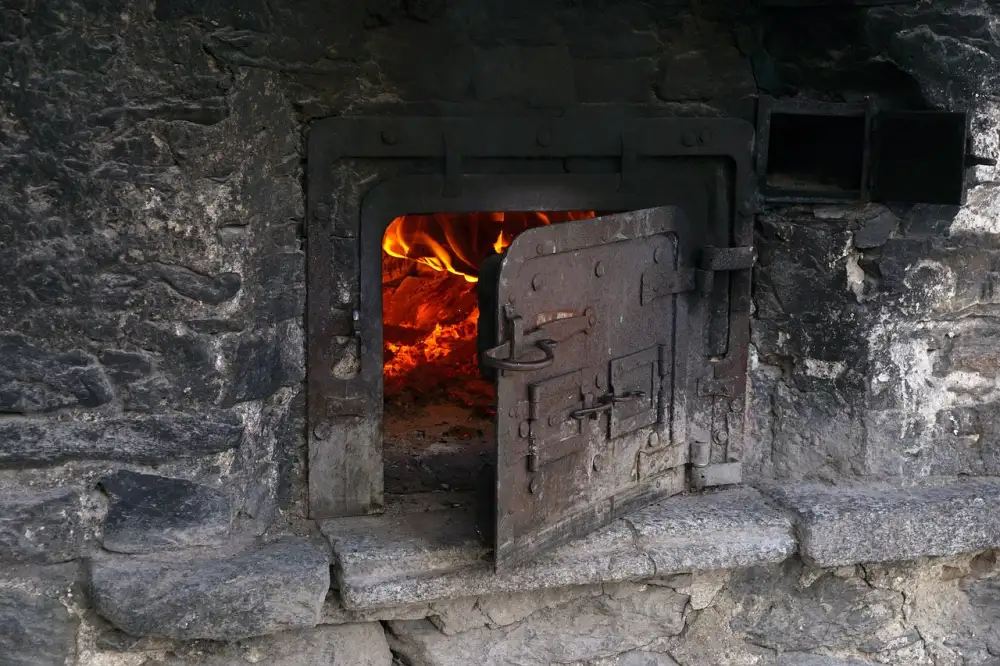Unleash Culinary Mastery with the Power of a Convection Oven: Elevate Your Home Cooking Experience

Are you tired of unevenly cooked dishes and lengthy cooking times? It's time to revolutionize your cooking experience with the power of a convection oven. Convection ovens have become increasingly popular among home cooks, thanks to their ability to cook food faster and more evenly. Whether you're a seasoned chef or just starting out in the kitchen, a convection oven can take your culinary skills to new heights. In this article, we will explore how convection ovens work, the benefits they offer, and provide tips for using them effectively. Get ready to unleash your culinary mastery!
How convection ovens work
A convection oven is a powerful tool that can take your cooking to the next level. But how exactly does it work? Unlike conventional ovens, which rely on radiant heat to cook food, convection ovens use a fan and exhaust system to circulate hot air evenly around the food. This constant movement of hot air ensures that food cooks faster and more evenly, resulting in perfectly browned crusts, tender meats, and moist baked goods. The fan also helps to eliminate cold spots and reduce cooking times by up to 25%. So whether you're roasting a chicken or baking a batch of cookies, a convection oven will deliver exceptional results every time.
Benefits of using a convection oven
Using a convection oven can bring numerous benefits to your cooking experience. Firstly, the even distribution of heat in a convection oven ensures that your food cooks more quickly and evenly. This means no more hot spots or undercooked areas.
Additionally, the circulating hot air in a convection oven helps to seal in moisture, resulting in dishes that are moist and tender on the inside while achieving a crispy exterior. This is particularly beneficial when roasting meats or baking pastries.
Furthermore, the faster cooking time of a convection oven can save you valuable time in the kitchen. You can expect to reduce cooking times by up to 25%, allowing you to prepare meals more efficiently.
Another advantage of using a convection oven is its versatility. It can be used for various cooking methods such as baking, roasting, broiling, and even dehydrating. This makes it an ideal appliance for those who love experimenting with different recipes and techniques.
Lastly, using a convection oven can lead to energy savings. Since it cooks food faster than conventional ovens, you will spend less time running the appliance and therefore consume less energy overall.
In summary, the benefits of using a convection oven include faster and more even cooking, improved texture and flavor of dishes, versatility in cooking methods, time-saving capabilities, and potential energy savings. With all these advantages, it's no wonder why many home cooks are opting for this culinary powerhouse in their kitchens.
Tips for using a convection oven effectively
To make the most of your convection oven, follow these tips for effective use:
- Adjust cooking time and temperature: Convection ovens cook food faster than conventional ovens. Reduce the cooking time by about 25% and lower the temperature by 25 degrees Fahrenheit (or 15 degrees Celsius) to prevent overcooking.
- Use low-sided pans: Opt for shallow baking dishes or sheet pans to allow hot air to circulate evenly around the food. Avoid using deep pans that can block airflow.
- Don't overcrowd the oven: Leave enough space between dishes for proper air circulation. Overcrowding can result in uneven cooking and longer cooking times.
- Rotate dishes halfway through cooking: To ensure even browning, rotate the position of your dishes halfway through the cooking process. This will help achieve consistent results.
- Use baking stones or sheets: Place a baking stone or sheet on the bottom rack of your oven to enhance heat distribution and promote crispy crusts on bread, pastries, and pizzas.
- Monitor food closely: Keep an eye on your food as it cooks since convection ovens can cook faster than expected. Use a reliable kitchen timer and check for doneness regularly to avoid overcooking.
By following these tips, you'll unlock the full potential of your convection oven and elevate your home-cooked meals to new heights of culinary excellence!
Differences between convection ovens and conventional ovens
One of the key differences between convection ovens and conventional ovens lies in how they distribute heat. While conventional ovens rely on radiant heat from the top and bottom heating elements, convection ovens use a fan to circulate hot air evenly throughout the cooking chamber. This ensures that food cooks more quickly and evenly, resulting in perfectly browned exteriors and moist interiors.
Another notable difference is the cooking time. Due to the efficient heat distribution, convection ovens can cook food up to 25% faster than conventional ovens. This can be a game-changer when you're pressed for time or hosting a dinner party.
Additionally, convection ovens are known for their versatility. With the ability to adjust temperature and airflow, you have more control over your cooking process. You can easily switch between baking, roasting, broiling, or even dehydrating with just a few adjustments.
Conventional ovens, on the other hand, are simpler in design and tend to be less expensive than convection ovens. They are ideal for basic baking tasks and may be preferred by those who prefer traditional cooking methods.
Ultimately, choosing between a convection oven and a conventional oven depends on your personal preferences and cooking needs. If you value speed, even cooking results, and versatility in your culinary endeavors, investing in a convection oven might be worth considering.
Popular recipes to try in a convection oven
1. Roasted Chicken: The convection oven's even heat distribution ensures a crispy skin and moist meat. Season the chicken with your favorite herbs and spices, then roast it at a slightly lower temperature than you would in a conventional oven.
2. Baked Goods: Convection ovens are perfect for baking cookies, cakes, and pastries. The circulating hot air helps create an evenly browned crust while keeping the inside tender and fluffy.
3. Pizza: Get that perfect pizzeria-style crust by using a convection oven. The hot air circulation ensures that both the crust and toppings cook evenly, resulting in a deliciously crispy pizza.
4. Vegetables: Roasting vegetables in a convection oven brings out their natural sweetness while maintaining their vibrant colors. Toss them with olive oil, salt, and pepper before roasting for a quick and healthy side dish.
5. Fish: Cooking fish in a convection oven is quick and easy. The hot air circulates around the fish, ensuring even cooking and preventing it from drying out.
6. Bread: Achieve bakery-quality bread at home by using a convection oven. The consistent heat distribution helps create a perfectly golden crust with a soft interior.
7. Casseroles: Whether it's lasagna or macaroni and cheese, casseroles cooked in a convection oven develop a beautiful golden top while heating through evenly.
Try these popular recipes in your convection oven to take your cooking to the next level!
Cleaning and maintenance of convection ovens
Cleaning and maintaining your convection oven is essential to ensure its longevity and optimal performance. Here are some tips to keep your oven in top shape:
1. Regular cleaning: After each use, wipe down the interior of the oven with a damp cloth or sponge to remove any food residue or spills. Avoid using abrasive cleaners that can damage the oven's surface.
2. Deep cleaning: Every few months, give your convection oven a thorough clean. Remove the racks and soak them in warm soapy water, then scrub off any stubborn stains or grease. Use a non-abrasive cleaner to wipe down the interior walls and door.
3. Cleaning the fan: The fan in a convection oven can accumulate dust and debris over time, affecting its performance. Gently vacuum or brush the fan blades to remove any buildup.
4. Check the seals: Inspect the door seals regularly for any signs of wear or damage. Replace them if necessary to maintain proper heat retention.
5. Oven exterior: Wipe down the exterior of the oven with a damp cloth as needed. Avoid using harsh chemicals that could damage the finish.
6. Maintenance checks: Periodically check for any loose screws or hinges and tighten them if necessary. Also, inspect the heating elements for any signs of damage or malfunctioning.
By following these cleaning and maintenance practices, you can ensure that your convection oven remains in excellent condition, providing you with many years of culinary delight.
Conclusion: Enhance your cooking experience with a convection oven.
Investing in a convection oven can truly elevate your home cooking experience. With its ability to distribute heat evenly and cook food faster, you can achieve culinary mastery like never before. The benefits of using a convection oven, such as improved browning and crispiness, make it a must-have appliance for any aspiring chef or home cook. By following some simple tips and trying out popular recipes specifically designed for convection ovens, you can unlock the full potential of this kitchen powerhouse. Don't forget to regularly clean and maintain your convection oven to ensure optimal performance. So why wait? Unleash the power of a convection oven today and discover the wonders it can bring to your kitchen!
Published: 11. 12. 2023
Category: Home



